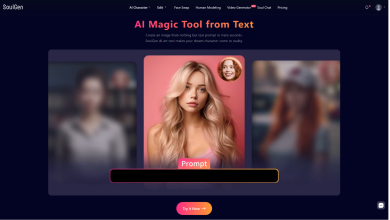
Artificial Intelligence (AI) has revolutionised the way organisations marketers capture and engage with their audiences. Marketers can now automate processes and utilise advanced personalisation to drive revenue growth. However, AI doesn’t only provide benefits to marketers, with a massive rise of bad actors now leveraging AI to carry out attacks on marketing budgets.
Pay-per-click (PPC) campaigns are a popular tactic marketers deploy to drive traffic. Organisations can attract audiences by offering incentives like discounts and sign-up bonuses. These online promotions are an effective way of grabbing attention, but marketers need to be wary of who they’re attracting. Threat actors are keen to take advantage of promotions for their own gain, and they have just the tools to do so.
AI has become more sophisticated and threat actors have incorporated it into their arsenal in the form of bots. These bots are programmed to produce a large volume of clicks on a PPC campaign. These clicks aren’t genuine as there is no intention to make a purchase or deliver new users, leaving marketers with inflated paid media costs but no results. Industries from social media platforms to sports betting all track new user acquisition as a key metric, and bots are directly impacting revenue by interfering with PPC campaigns.
Fake Accounts on the Rise
Promotions are an integral part of many marketing strategies. Offering a free trial period or a percentage cut from your first place is commonplace nowadays. Broad keyword targeting like this has proved successful, making businesses easier for new users to find as they look for a deal.
Bad actors are actively targeting promotions and using AI to exploit them. AI-powered Bots are capable of creating a fake account to claim a promotion then repeating the process over and over. Repeated clicks like this rapidly drive-up customer acquisition costs (CACs), while at the same time ramping up the publishers’ ad revenue.
PPC campaigns typically have a set budget, and after a certain amount of clicks this budget is used up and the campaign removed from circulation. After this, no new users will be able to see the ad, instead bots will use up the ad budget before legitimate users get a chance to see it.
Organisations will then lose out on potential new users and revenue in favour of bots. This significantly impacts budgets as bots don’t stick around to spend money, instead abusing promotions on a bad actor’s behalf and offering nothing in return.
Increased Levels of Sophistication
The damage doesn’t stop there, as according to DoubleVerify, there has been an 86% year-over-year increase in General Invalid Traffic (GIVT) rates in late 2024. The rise of AI has significantly contributed to this, as the popularity of tech like AI assistants has led to the proliferation of AI-powered web crawlers. These crawlers gather data for large language models, while increasing invalid web traffic.
The increase in GIVT directly impacts campaigns by distorting their metrics, inflating impression counts. The accuracy of a campaigns’ performance is then compromised, making it more difficult to gauge genuine engagement.
Though GIVT isn’t generally malicious in intent, it is still harming budgets. Marketers also have to contend with AI-powered Sophisticated Invalid Traffic (SIVT). SIVT schemes like bot networks are designed by fraudsters with the express intent of evading detection and exploiting budgets for themselves.
AI activity is becoming increasingly difficult to recognise and identify. Developments in the technology allow bots to simulate legitimate human behaviour, even down to mouse movements and clicks. Marketers will see a rise in false positive click through results and deem a campaign a success. In reality, these results are AI bots disguised as humans, but funds will be mistakenly funnelled into future campaigns set to underperform.
To maintain anonymity, bad actors can mask their location. This is achieved by routing their connection through a different server. To further conceal their activities, bots can be programmed to delete their cookies after carrying out fraud to cover their tracks. Marketers are then left none the wiser, and the bots are free to repeat the cycle and continue taking advantage of promotions.
Exposing Hidden Threats
If action isn’t taken, marketers risk significant losses in both the short and long-term. To protect PPC campaigns from fraudulent bots, marketers need to develop a strategy:
- Proactive Monitoring: Though AI is at new levels of sophistication, SIVT can still be identified by a few tell-tale signs and then blocked. A sudden spike in traffic is a sign of potential AI activity, especially when coupled with a high bounce rate. This is due to bots quickly entering the site to access the bonus or promotion, and then leaving. Suspicious IP addresses or traffic from a location different from your typical audience are also warning signs.
- Robust Identity Verification: Bots create numerous fake accounts, and to combat this marketers should implement robust identity verification at sign-up. This works to prevent bad actors from repeatedly accessing a promotion with different accounts by requiring users to provide their details.
- Deploy Ad Fraud Detection Tools: Marketers can implement fraud detection tools that identify if a click is non-human after its first interaction with an ad. This will flag fraudulent traffic immediately before it has the chance to impact ad budgets. Tools with in-platform registration can also provide an extra filter to ensure only legitimate human users can interact with a campaign.
Defending Revenues
AI has vastly improved efficiency with automation across verticals worldwide, particularly within marketing. However, the rising risk of both GIVT and SIVT has placed significant pressure on marketers’ budgets.
It’s integral that marketers act now to prevent AI traffic from further undermining their hard work. Marketers must take an active role in the identification and blocking of non-genuine traffic if they want to make the most of their PPC campaigns.





